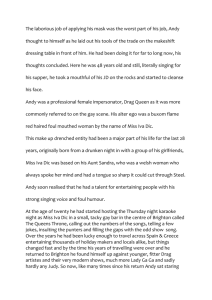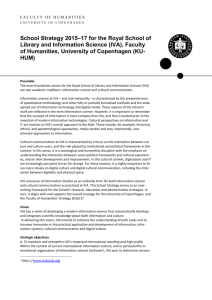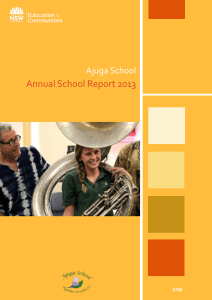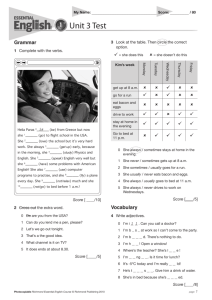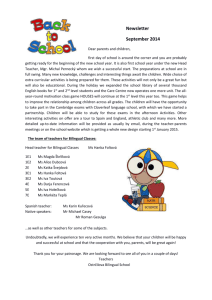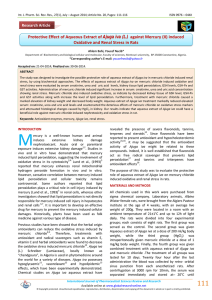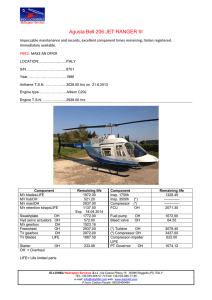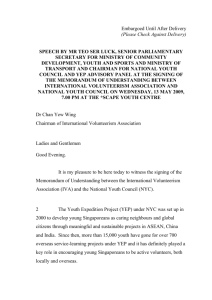pdf file - Centre for Mediterranean Cooperation IUCN-Med
advertisement
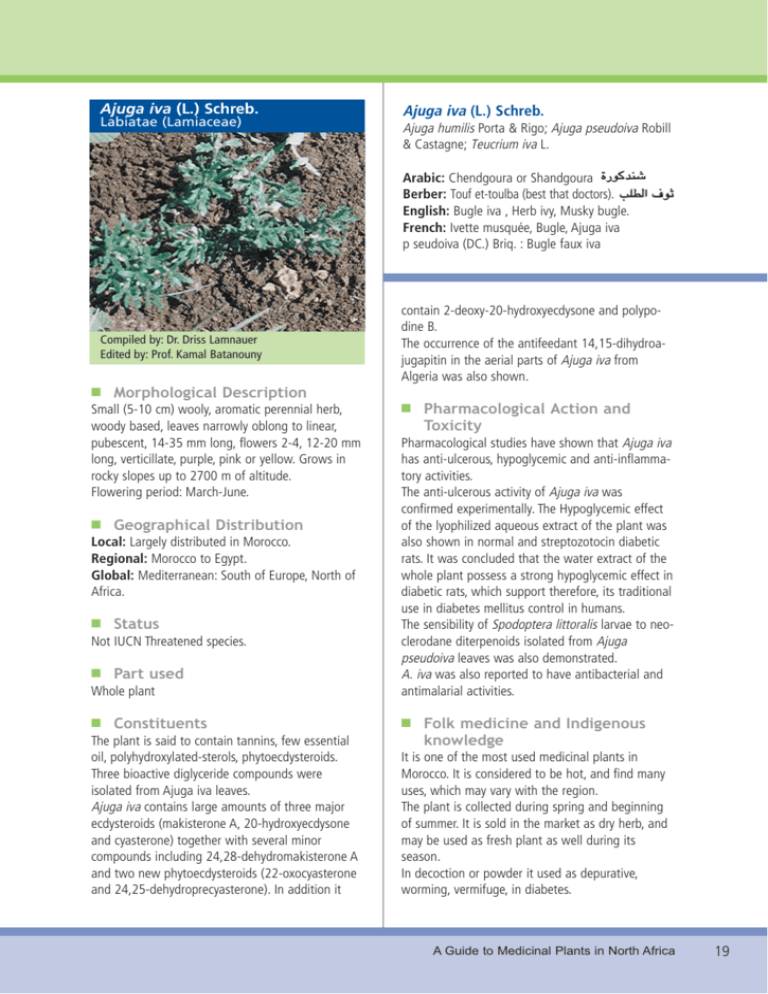
Ajuga iva (L.) Schreb. Labiatae (Lamiaceae) Ajuga iva (L.) Schreb. Ajuga humilis Porta & Rigo; Ajuga pseudoiva Robill & Castagne; Teucrium iva L. Arabic: Chendgoura or Shandgoura Berber: Touf et-toulba (best that doctors). English: Bugle iva , Herb ivy, Musky bugle. French: Ivette musquée, Bugle, Ajuga iva p seudoiva (DC.) Briq. : Bugle faux iva Compiled by: Dr. Driss Lamnauer Edited by: Prof. Kamal Batanouny contain 2-deoxy-20-hydroxyecdysone and polypodine B. The occurrence of the antifeedant 14,15-dihydroajugapitin in the aerial parts of Ajuga iva from Algeria was also shown. Morphological Description Small (5-10 cm) wooly, aromatic perennial herb, woody based, leaves narrowly oblong to linear, pubescent, 14-35 mm long, flowers 2-4, 12-20 mm long, verticillate, purple, pink or yellow. Grows in rocky slopes up to 2700 m of altitude. Flowering period: March-June. Pharmacological Action and Toxicity Whole plant Pharmacological studies have shown that Ajuga iva has anti-ulcerous, hypoglycemic and anti-inflammatory activities. The anti-ulcerous activity of Ajuga iva was confirmed experimentally. The Hypoglycemic effect of the lyophilized aqueous extract of the plant was also shown in normal and streptozotocin diabetic rats. It was concluded that the water extract of the whole plant possess a strong hypoglycemic effect in diabetic rats, which support therefore, its traditional use in diabetes mellitus control in humans. The sensibility of Spodoptera littoralis larvae to neoclerodane diterpenoids isolated from Ajuga pseudoiva leaves was also demonstrated. A. iva was also reported to have antibacterial and antimalarial activities. Geographical Distribution Local: Largely distributed in Morocco. Regional: Morocco to Egypt. Global: Mediterranean: South of Europe, North of Africa. Status Not IUCN Threatened species. Part used Constituents The plant is said to contain tannins, few essential oil, polyhydroxylated-sterols, phytoecdysteroids. Three bioactive diglyceride compounds were isolated from Ajuga iva leaves. Ajuga iva contains large amounts of three major ecdysteroids (makisterone A, 20-hydroxyecdysone and cyasterone) together with several minor compounds including 24,28-dehydromakisterone A and two new phytoecdysteroids (22-oxocyasterone and 24,25-dehydroprecyasterone). In addition it Folk medicine and Indigenous knowledge It is one of the most used medicinal plants in Morocco. It is considered to be hot, and find many uses, which may vary with the region. The plant is collected during spring and beginning of summer. It is sold in the market as dry herb, and may be used as fresh plant as well during its season. In decoction or powder it used as depurative, worming, vermifuge, in diabetes. A Guide to Medicinal Plants in North Africa 19 The powder made into small balls with honey is ingested for its useful action against stomach and intestinal pains, enteritis, fever, sinusitis and headache. Powder of dried plant or its infusion taken after meals against diabetes and hypertension. Infusion of flowering branches is considered as antihelmintic, antidiarrheic, depurative, very effective vermifuge, for feminine sterility, colds, and troubles of the digestive tract. The plant, which contains tannins and thus is astringent, has been applied to all sorts of mouth ailments (ulcer of the mucosa, toothache…). Externally it is considered as vulnerary. Herb ivy is considered to have all the properties of Artemisia and thyme. Flowering branches in fumigation are said to be helpful in psychic ailments. The plant is considered as a general preventive for all diseases and therefore added to home made bred. Diseases Colds, Digestive decoders, Fever, Gastric pain, Hemorrhoids, Hypertension, Diabetes, Diarrhea, Rheumatism, Nevralgy (stress), Otis, Pain, Respiratory diseases (cough, asthma…), Sterility in women, Internal parasites. References Wessner M.; B. Champion, J.P. Girault, N. Kaouadji, B. Saidi; R. Lafont, 1992. Ecdysteroids from Ajuga iva. Phytochemistry-Oxford, 31: 37853788. 20 A Guide to Medicinal Plants in North Africa Hilaly J.E., B. Lyoussi, 2002. Hypoglycaemic effect of the lyophilized aqueous extract of Ajuga iva in normal and streptozotocin diabetic rats. J. Ethnopharmacol., 80:109-13. Bondi M.L., M.R Al-Hillo, Y., K. Lamara, S. Ladjel, M. Bruno, F. Piozzi and M. S. J. Simmonds, 2000. Occurrence of the antifeedant 14,15-dihydroajugapitin in the aerial parts of Ajuga iva from Algeria, Biochem. Syst. Ecol., 28: 1023-1025. Habib J., F. Ben Douissa, K. Ghedira, A. Toumi, R. Chemli, 1990. « Contribution à l'étude de la pharmacopée traditionnelle de Tunisie: Activité anti-ulcéreuse de Ajuga iva, Rhus oxyacantha et Teucrium polium», Ethnopharmacologie: sources, méthodes, objectifs, Paris, Metz, ORSTOM et SFE, 387-388. Ghedira K., R. Chemli, B. Richard, M. Zeches, L. LeMen-Olivier, 1991. Contribution à l'étude de la pharmacopée traditionnelle de Tunisie: étude des parties aeriennes d'Ajuga iva (L.) Schreb. PlantesMedicinales-et-Phytotherapie, 25: 100-111. Ben Jannet H., F. Harzallah-Skhiri, Z. Mighri, M.S.J. Simmonds, W.M. Blaney, 2000. Responses of Spodoptera littoralis larvae to Tunisian plant extracts and to neo-clerodane diterpenoids isolated from Ajuga pseudoiva leaves. Fitoterapia, 71: 105-112. General references Boulos L., 1983. Ajuga iva in: Medicinal Plants of North Africa. Reference Publications, Inc., 98. Bellakhdar J., 1997. Ajuga iva in: La Pharmacopée Marocaine Traditionnelle. Ed Le Fennec, Ibis Press. 337.
